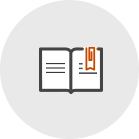요약문
세계는 국제협약을 통해 온실가스 의무감축을 현실화하고 있다. 우리나라도 기후변화에 대응하여 2020년 배출전망치 대비(BAU) 30%를 온실가스 감축목표로 설정한 바 있다. 2011월 7월에 발표된 국가 온실가스 감축목표를 달성하기 위하여 농림어업 부문의 감축목표는 5.2%로 할당되었다.
농림수산식품부문의 온실가스 감축목표를 효과적으로 달성하기 위해서는 첫째로 감축잠재력이 높은 저탄소농업기술이 개발되어야 하고, 둘째로 개발된 저탄소농업 기술이 실제로 농가단위에서 적용되어야 할 것이다. 하지만 농가들이 저탄소농업기술을 적용할 때 초기에 많은 비용이 소요되거나 노동력이 증가하기 때문에 기술적용이 용이하지 않는 것으로 알려져 있다. 따라서 실천농가에 대한 적절한 인센티브 제공 등 정책적 수단이 강구될 필요가 있다.
이 보고서는 「저탄소 농업 직접지불제도 도입 방안」에 관한 정책과제의 최종결과물이다. 주요 저탄소 농업 기술 적용의 경제성 평가를 바탕으로 적정수준의 지급단가·한도·기한 등을 산정하였으며, 농가의 저탄소 직불제 프로그램 참여 의향을 분석하였으며, 주요국의 저탄소 직불제 프로그램을 검토하였다. 그리고 농업인들의 여건에 따라 실천 가능한 방법을 선택할 수 있는 메뉴방식의 저탄소농업 직불제 프로그램을 제시하였다. 더 나아가 저탄소농업 직불제의 성공적인 도입을 위해 사후관리를 위한 이행점검과 중앙정부, 시·군 정책담당자, 농업인, 유관기관 등 관련주체의 적절한 역할 분담의 중요성을 제시하였다.
The purpose of this research is to present detailed measures to implement the direct payment program for low-carbon agriculture which was developed to proactively cope with climate change. The detailed research goals include development of direct payments based on farming methods, calculation of adequate base payment, payment limits, and duration, a review of direct payment programs for low-carbon agriculture in advanced countries, and an analysis of farmers' intentions to participate in the direct payment program.
A survey was conducted on farmers who have introduced low-carbon farming techniques and the survey results showed that most of them have introduced the farming techniques through agriculture technology centers (58.7%) out of concern for environmental problems such as climate change (49.7%).
The types of low-carbon farming techniques that are currently applied are found to be classifiable into the following categories: green manure crops (25.4%), tailored fertilizers (17.6%), controlled release fertilizers (16.7%), plowless farming (7.1%), and intermittent irrigation (5.5%). As for the difficulties in applying the techniques, farmers have referred to decrease in yield (25.7%), lack of price differentiation due to low awareness of low-carbon agricultural products (24.6%), and increase in labor input (21.7%).
The most predominant opinion concerning how to propagate low-carbon farming techniques was that the government should provide incentives such as direct payments (42.0%). Farmers also said that they most prefer (40.2%) direct payments commensurate with low-carbon farming techniques and that they will adopt (78.3%) new low-carbon farming techniques that will be developed in the future.
The economic feasibility of major environmentally friendly farming techniques was evaluated and the results showed that the net profit decreased for paddy field water management, plowless farming (rice), cultivation of green manure crops, and use of tailored fertilizers. By contrast, the net profit increased for alternative energy, highly efficient technology farming, and plowless farming (chili).
The direct payment for low-carbon farming, which is a mutual compliance-based environmental program that combines agricultural policy with climate policy, has an important meaning in that it is a green gas reduction policy in the agricultural sector. Since there are many kinds of green technologies that can be applied to low-carbon agriculture, the direct payment for low-carbon agriculture was presented based on farming methods so that farmers can choose the right method to meet their needs under different circumstances.
The base amount of direct payment for low-carbon farming is classified into two categories - the compensation for income reduction and the incentive grant for greenhouse gas reduction, and it varies as follows: 500,000~700,000 won per installment of irrigation equipment for intermittent irrigation (M1), 480,000~580,000 won per hectare for plowless farming (M2), 700,000~ 900,000 won per hectare for cultivation of green manure crops (M3), 300,000~500,000 won per installment of "eco-driving system" for efficient use of agricultural machinery (M4), 900,000~1,000,000 won per hectare for use of tailored fertilizers (M5), and 300,000~600,000 won per hectare for continuous application of organic farming.
The direct payment for low-carbon agriculture is a new direct payment which has been added to the current program for direct payments in agriculture (i.e., the direct payments for business transfers, environment protection, unfavorable farming regions, and landscape conservation). The ratio of farmers who are willing to take part in the new program is shown to be about 75%, and it is anticipated that the actual participation rate will be high if the base amount of the direct payment is set at an appropriate level and when the policy is promoted properly.
In order to successfully adopt the direct payment for low-carbon agriculture, it is crucial to have a proper division of roles among related entities that include policy administrators at the central and local governments, farmers, and related organizations (agriculture technology centers, the Foundation for Agri-Tech Commercialization & Transfer, etc.) in addition to the implementation inspection for post-management.
Researchers: Chang-Gil Kim, Hak-Kyun Jeong, Jeong-Seung Kim, Dong-Hyun Moon
Research period: 2012. 7. - 2013. 1.
E-mail address: changgil@krei.re.kr
저자에게 문의

저자소개
- 김창길
(Kim, Changgil)
저자에게 문의

※ 퇴사하신 분이지만 아래의 내용을 입력해 주시면 관리자가 전달해드리겠습니다.
구매안내
KREI의 출판물은 판매 대행사 (정부간행물판매센터)와 아래 서점에서 구입 하실 수 있습니다.
판매대행사
- (주)정부간행물판매센터http://www.gpcbooks.co.kr사이트 바로가기
- 서울특별시 중구태평로 1가 25번지
- TEL 02) 394-0337, 734-6818
- FAX 02) 394-0339
판매서점


